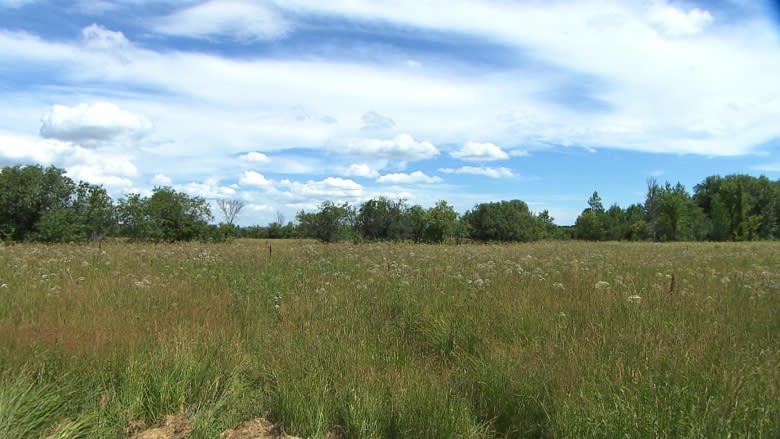Environmentalists worried about light rail project's impact on West Island park
Environmentalists say they are worried about the impact a proposed light-rail network will have on a West Island park.
The electric, fully automated rail line would be made up of 24 stations stretching from Brossard to Trudeau airport. It's projected to cost $5.5 billion and be completed by 2020.
An environmental assessment made public Thursday makes specific mention of l'Anse-à-l'Orme Park, saying the project could put environmental pressure on the area, including increased residential and commercial development.
David Fletcher, vice-president of the non-profit local group Green Coalition, says the ecosystem in the park is fragile already.
"There is a bird called the Least bittern and that bird is going to be almost directly in the path of this rail line trajectory," he said.
Fletcher says he knows transit solutions are needed in Montreal, but he's concerned that the project will lead to major development around rail stations, putting more pressure on local ecosystems.
Dan Hobus, president of Sauvons l'Anse-à-l'Orme, a group trying to stop a development project in the area, says he believes development is inevitable.
"Right now, there are no homes at all. No one lives in that area. They will have to build homes and populate the region in order to justify the train," he said.
Room for both projects, group says
Karel Mayrand, director of the Quebec branch of the David Suzuki Foundation, said he is in favor of the train project because it will encourage the construction of residential areas built around public transit.
"What we say is that there is enough space to do both," he said, referring to building public transit and real estate projects.
Jean-Vincent Lacroix, spokesperson for CDPQ Infra, the Caisse de dépôt et placement du Québec consortium building the train line, said there are plans to try to mitigate any potential issues, such as looking for other places to keep the equipment needed to build the infrastructure, thereby making the construction zone smaller.
"We hope that we find a way and a solution that first of all could bring the [train] to Ste-Anne-de-Bellevue and to make sure that people can use it. ... And of course to have a route that has the least [environmental] impact possible," he said.
Lacroix said it's up to the municipalities to determine whether they will allow residential projects around the train station.
Paola Hawa, mayor of Ste-Anne-de-Bellevue, told Radio-Canada she would need more time to look over the assessment before commenting.
Fletcher said his group will try to participate in the public consultations but that he has little faith that anything will stop the momentum of the project.
Members of the public have 45 days to consult the documents, which have been posted online.



